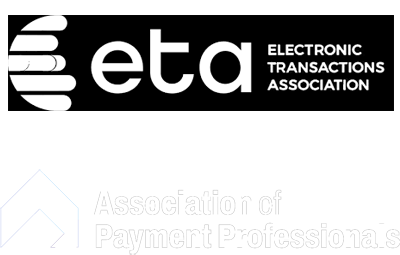18 Mar

The point of sale or POS system is essential in a modern retail business. As transactions, sales management, and customer relationships have become increasingly digital, choosing a POS system that empowers your business is crucial to remaining competitive.
After reading, you’ll understand how point-of-sale systems work and be in a position to make an educated choice when shopping for your next POS vendor.
What is a Point-of-Sale System (POS)?
Point-of-sale systems are used by retail businesses to process customer transactions, keep track of inventory, manage customer loyalty programs, and advanced sales reporting. Complete POS systems include a user interface, credit card processor, cash drawer, receipt printer, and barcode scanner. The system is controlled with cloud-based software that can be accessed with a user login on various devices. However, there are options with less physical equipment that allow retailers to process payments with as little hardware as just their smartphone.
How Can a Point-of-Sale System Help Businesses?
Digitalizing the customer-retailer relationship has many advantages beyond a reliable way to process cash, credit, debit, and contactless payments. Retailers can use the system as the center point of their retail management. POS systems offer highly advanced reporting, which can be leveraged to identify consumer trends. Data is far more reliable when pricing or purchasing inventory than going off your gut feeling.
Once you have a reliable POS system in place and it’s being used across your business channels, you can make data-informed decisions that will directly influence your revenue.
In addition to managing retail, a high-quality POS system also features customer relationship software to help you track consumer habits and create and manage loyalty programs. Customer relationship management (CRM) is also helpful for marketing. For example, you can obtain customers’ personal information, such as their email and cell phone number, to engage directly when offering a promotion.
How Does Point-of-Sale Work?
You can think of a POS system as merging a cash register and highly advanced retail management software. While point-of-sale systems can include a cash drawer, interface, and barcode scanner, the value is provided by seamless software integration.
The POS application is downloaded on a computer, then linked to a credit card processor and other physical components that help retailers perform transactions. Once the software is downloaded and an account is made, sales are tracked and managed within the application. Retailers can modify prices, run promotions, track inventory, and manage customer loyalty programs all from one dashboard.
One of the most important aspects of a POS system is the payment processor. POS companies work with financial institutions so retailers can accept major credit and debit cards and transfer money from the application to their bank account. Payment processing is where POS companies make money. Handling transaction is highly lucrative, and you need to be aware of all fees when choosing a POS system for your business. (Don’t worry, we’ll get into CC transaction fee specifics a little later)
Do POS systems increase revenue?
A POS system can increase revenue by optimizing the sales process, making it more efficient, and providing detailed sales data reporting. Once you have a centralized overview of your inventory and sales, you are in a far better position to make decisions. For example, choosing which products to discontinue, increase stock, or offer at a discount is straightforward when you have access to sales data.
Another way a POS system can increase store revenue is by offering multiple payment options. Whether your store is a brick-and-mortar, exclusively online, or both, providing consumers with various payment options such as major credit cards, contactless payments (Apple Pay, Google Pay, etc.), and cryptocurrency speeds up the purchasing process. In addition, by allowing consumers to pay how they want, you are more likely to retain shoppers and increase individual cart sizes.
Contactless payment has become a significant selling point in retail. From 2019 to 2020, there was a 150% increase in contactless payment transactions, and in 2021, Raydiant reported that 80% of US consumers had used one payment method. Furthermore, 70% of US merchants have reported customers requesting contactless payment options in 2020.
How Much Does a POS System Cost?
The cost of POS systems can be broken down into two categories – upfront cost for hardware and service fees.
A POS system typically costs between $500 and $1,500 upfront, with monthly fees ranging from $50 to $200 for the service. This cost does not include CC transactions; it is only for retail management software.
As we mentioned, point-of-sale vendors also charge a percentage of each sale, ranging from 1.5% to 3%. Many point-of-sale companies also charge a monthly and transaction fee (separate from the service charge) of between $10-$20. Additionally, you’ll encounter vendors who add a flat rate per transaction between $0.10 and $0.30 on every sale.
Understanding monthly service fees and transaction fees is critical to finding the best POS system for your business. If you don’t consider these charges or the company hides them, you won’t have a realistic perception of how much your POS system will cost the business annually.
What is High-Risk Payment Processing?
Some POS companies offer a service known as high-risk payment processing. The service works the same as regular POS (monthly and transactional fees); however, the service is catered toward industries with a high risk of fraud or offering illegal products in some parts of the world.
One of the best examples is the cannabis industry. Dispensaries and even CBD companies need a way to process, track, and manage transactions, but banks are hesitant to work directly with companies that sell cannabis or provide services for the industry. High-risk payment processors will take on these clients but charge more per month and transaction. Some of the monthly fees can be hundreds of dollars and as much as 10% per sale.
Recent Innovations in POS
Point-of-sale systems have come a long way over the past decade. Some of the first cloud-based systems are very basic compared to today’s complex software. Two major Innovations include advanced CRM integrations and less hardware.
Combining POS with CRM is a no-brainer for businesses. The consumer and retailer relationship is far more complex than just a credit card transaction. With POS with integrated CRM, you can optimize the customer experience by capturing data, offering promotions, and identifying loyal customers.
Reducing the hardware required to process credit cards is another significant advancement in POS systems. Many businesses don’t need a cash register, barcode reader, or multiple user interfaces. Offering more flexible options provides non-traditional companies with solutions that fit their customer journey, whether processing payments at a farmer’s market or pop-up retail locations.
5 Payment Processing Companies
Below we’ve selected 5 of the most popular point-of-sale options available. Comparing each company will help you understand how POS systems work and how much they will cost.
Square
Square was formed in 2009 by Twitter’s former CEO, Jack Dorsey, and, interestingly enough, a glassblower named Jim McKelvey. The parent company has recently changed its name to Block but still uses Square as the point-of-sale component of the business. Square POS has the least barrier to entry and doesn’t require a contract or monthly fees.
Once you sign-up for Square POS, you’ll get a free credit card processor. You also have the option to purchase hardware like the Square Register, Square Stand, or Square Terminal to interact with customers during their transactions. In addition, CRM is integrated into the software and available for free; however, if you want advanced features, you’ll have to pay $29.99 monthly.
Block handles payments, or you can use another 3rd party credit card processing company. Block charges 2.6% plus $0.10 per transaction, increasing rates for online purchases and keyed-in transactions.
Square has built an entire ecosystem around point-of-sale. Businesses can use the service to run payroll, build a website, manage an email marketing campaign, set up a bank account, and even get a business loan.
Stripe
Stripe is another massively popular POS company for businesses of all sizes. Like Square, the platform centers around the software rather than the hardware. Stripe offers cost-effective payment processors and a complex platform to manage sales, process payments, and connect with customers.
Small businesses that do business on the go are perfectly suited for the Stripe Reader. The device connects directly to a smartphone and integrates with your back end. As a result, stripe Readers are ready to accept major credit cards and handle contactless payments.
While Stripe’s hardware accommodates point-of-sale, the company’s primary focus lies in the software. They offer an assortment of CRM tools and integrate seamlessly with content management systems to handle transactions of an online store.
Stripe’s services go far beyond POS with solutions for SaaS companies, online marketplaces, and financial platforms.
The integrated POS payment processing pricing is highly transparent, with no setup, monthly, or hidden fees. Stripe charges 2.9% plus $0.30 on all card transactions.
Toast
Toast is a point-of-sale company catered specifically to the restaurant industry. While Toast provides everything any business needs to process payments, they also offer restaurant-centric solutions like mobile ordering, scheduling and team communication, gift cards, payroll, and 3rd party integrations.
The advantage of choosing Toast is they’ve built an ecosystem of hardware and digital products that help all types of restaurants interact with customers. Other POS systems have challenges accommodating bars, food trucks, or take-out-only restaurants, but Toast has developed tools with these types of businesses in mind.
Toast offers a free plan, but restaurant owners must pay a monthly fee starting at $69 per month to use multiple terminals. In addition, the processing fee is 2.69% on all transactions.
Lightspeed
ShopKeep was one of the pioneers of cloud-based POS systems. The company offered a massive selection of hardware, including credit card readers, iPad enclosures, printers, cash drawers, barcode scanners, and product labels.
Recently the company has been acquired by Lightspeed, another POS company that is more focused on integrating CRM tools into point-of-sale.
Lightspeed provides POS and CRM to various businesses, including retail, restaurants, golf, liquor stores, and CBD. The company has solutions tailored to each type of retail business. Lightspeed also integrates with 3rd party tools like Mailchimp, Open Table Facebook, Oracle, TikTok, and other essential platforms companies need to reach customers.
Service and processing fees are dependent on the type of business, CRM features, and the number of locations.
Clover
Our final POS company is Clover. The point-of-sale provider is highly popular with retail businesses. Their service is very similar to Lightspeed in that they offer a wide variety of hardware and have advanced software to handle CRM.
If you’ve ever been to a coffee shop and paid with a credit card, you’ve likely interacted with the Clover POS system.
Clover also offers eCommerce solutions so businesses can take payments in person and online. One of the critical differences between Clover and other POS is how you can shop by business type and have a fully customized POS system delivered ready to use out of the box.
While Clover provides payment processing starting at 2.3%, total fees depend on your business.
What’s the Next Evolution of POS?
Point-of-sale companies are going in two separate directions; you can see the differences through the 5 vendors selected.
Technology companies like Square and Stripe offer low barrier-to-entry services focusing on software. These providers cater to companies that process payments primarily online.
The other direction is catering to retail operators that do most of their sales face-to-face with customers. These businesses require more hardware and specific solutions to handle their unique consumer journey. While the hardware is essential, POS vendors like Clover, Toast, and Lightspeed also must provide integrated CRM platforms to remain competitive.
As the economy becomes more digital, POS companies must offer more solutions to accommodate the modern consumer. The future of point-of-sale will likely follow one of the two paths while providing more digital tools to optimize the retailer and consumer experience.





